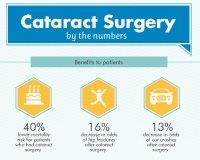The Trip Of LASIK Surgery: Insights From Significant LASIK Surgeons

Post By-Houston Svenningsen
You've likely read about LASIK surgical procedure and its pledge of more clear vision, but do you understand just how far it's come given that its creation? Leading LASIK doctors have witnessed remarkable changes in methods and modern technologies that have dramatically enhanced individual results. As we discover this advancement, you'll uncover the crucial advancements that have actually transformed LASIK right into a dependable alternative for vision modification-- and what the future could hold for this life-changing treatment.
The Very Early Days of LASIK: A Historic Perspective
Although LASIK surgery has actually come to be a popular and reliable choice for vision correction, its beginnings date back several decades.
In the 1980s, the groundwork for LASIK was laid through developments in corneal surgery and laser technology. At first, procedures such as PRK (photorefractive keratectomy) paved the way for understanding exactly how to reshape the cornea properly.
You 'd be amazed to find out how early pioneers trying out different strategies, fine-tuning them in time.
By the very early 1990s, the first LASIK surgeries were performed, incorporating the accuracy of lasers with the strategies learned from earlier methods.
This development supplied clients a quicker recovery and reduced pain, noting a substantial advance in vision correction.
Technical Improvements in LASIK Surgical Procedure
As modern technology continues to advance, LASIK surgery has substantially taken advantage of innovations that boost both safety and security and effectiveness.
You'll locate that modern laser systems, like femtosecond lasers, develop specific corneal flaps with marginal interruption to bordering cells. This development lowers recovery time and boosts aesthetic results.
Furthermore, wavefront-guided modern technology customizes the therapy to your distinct eye, dealing with not just nearsightedness or farsightedness yet additionally higher-order aberrations for sharper vision.
Furthermore, enhanced diagnostic devices enable even more accurate evaluations, ensuring your procedure is customized particularly to your demands.
These developments have resulted in faster healing times, fewer issues, and enhanced individual contentment.
With each technological leap, LASIK comes to be an even more viable alternative for vision correction.
The Future of LASIK: Trends and Developments
Looking in advance, LASIK surgery is positioned to go through impressive transformations driven by cutting-edge technologies and evolving client needs.
You can anticipate developments in customized therapies, using artificial intelligence and machine learning to enhance surgical accuracy. These innovations will allow surgeons to tailor procedures particularly to your distinct eye attributes, improving results and reducing threats.
Additionally, next-generation laser systems might decrease recuperation times, allowing you to go back to everyday activities quicker than ever before. As telemedicine grows, pre-operative appointments may come to be more obtainable, supplying you ease and versatility.
With recurring study into corneal reshaping methods, LASIK can quickly benefit much more people, including those formerly considered inappropriate for surgical procedure.
The future of LASIK looks encouraging, guaranteeing boosted vision and higher patient satisfaction.
Conclusion
To conclude, LASIK surgery has actually come a long way since its inception, thanks to cutting-edge innovation and cutting-edge methods. As you consider vision improvement options, bear in mind that individualized treatments and advanced diagnostics are currently at the forefront of LASIK, making certain much safer and a lot more efficient outcomes. With recurring trends and advancements, LASIK continues to evolve, promising even better outcomes for patients. Embrace the future of vision improvement, and discover just how LASIK can transform your life.

